
Travel story about Thailand
A travel story by Atip (Atippaj Pattapongwat) – a guy who falls in love with community and nature
Thailand has been known as many travelers’ dream traveling destination for so long. In general, the country has attracted all kinds of travelers ranging from budget-saving backpackers to luxurious top spenders. Thailand has its beauty to serve all kinds of leisure needs.
If we google search about Thailand tourism, below are definitely the photos that you will see.
Crystal-clear beaches an amazing sunset, a city with a wide variety of picturesque temples, elephants as Thailand’s national animal, a number of instagrammable day trails, and if you don’t experience traffic congestion, you cannot really say that you visited Thailand (or Bangkok to be precise)! But the skytrain and metro are many times faster, more fun, and sustainable!
However, apart from the above general tourist attractions in Thailand, the author of this travel story is also a big fan of another kind of traveling which might not really be that famous yet among international tourists – trekking and community-based tourism.
In this country (populated by 70 million people), there are so many small communities that live across Thailand and tourism becomes one of the ways these communities earn their income as well. I will take everyone through my 2 journeys that I will never ever forget until the end of my life.
Lang Ga Luang – Lang Ga Noi Peak Trail | ลังกาหลวง ลังกาน้อย
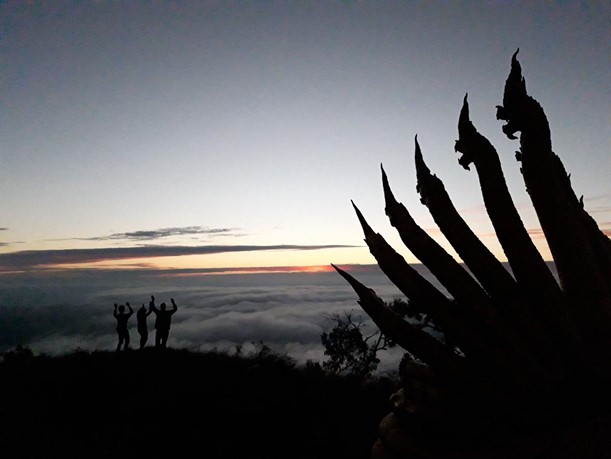
Being bombarded with a big pile of stressful work, I did research on some places that people did not really know about. I found a place in Chiang Rai province with 3-day-2-night trekking of about 20’ish kilometers which would be led by a group of villagers from a local community. I thought to myself that this was what I needed!
We found that it was quite difficult to find the information given that the trekking route was known as one of the toughest in Thailand. It was really steep and without a toilet at all. There were many routes that you actually had to climb, using your two hands. However, eventually, we began our journey with a good sleep on an overnight bus from Bangkok to Chiang Mai. Then, we hired the local van (Red Van – if you want to know how Thai people call such kind of local car) from Chaing Mai Bus Station to the Khun Jae National Park where we met our local rangers and porters there.
As a common practice to kick-off the journey together, we had some get-to-know conversation and started our trekking right away with mental excitement but physical fatigue. Along the route, I had many interesting conversations with the local people on how the trekking route was a part of their lives, what stories they had been brought up with, and how people trekked up to the top to worship the Naka (a holy snake) Buddha statue.
The view along the routes was the most stunning in my entire life. All those valleys and freshwater along the trails reminded me of how amazing they would be. No matter how hard the trek was, I could feel the pride, gratification, and ecstasy rising up in my own soul despite the exhaustion. It was so beautiful that we sat down and enjoyed every single view of the trail. Seriously, it was not because we were extremely tired – trust me, it was not!
Throughout this 3-day-2-night trial, the local people are heroes of our trip. We could not say goodbye to the forest with this unforgettable memory without them. We chitchatted and shared some meals together!
5.00 am of the last day was the day that completely changed my life and has shaped my traveling interest up until today. The local people came to wake us up and told us that we might observe the sea of mist. Many of us were too exhausted and sore to even stand up. However, I and a few more friends managed to follow our heroes’ advice. It was really cold for tropical people like us at about 1-digit celsius degree at that time. We followed them until we reached the point where all of us could not do anything except stand next to each other and immersed ourselves into a cool breeze and the first sunray of the day.
And yes, from that day, I became attracted to all trekking routes with local people. It’s not only because of the picturesque trail routes but also because of the story exchange we had along with each other. Our support with a proper understanding of their culture could empower them to stand up and run their communities with pride and dignity. This is something I love the most when it comes to “support local”.
The other trip that I decided to share in my travel story is also another way that we can empower the local communities.
Pre Toh Lor SU or Heart-shaped Waterfall | เปรโต๊ะลอซู หรือ น้ำตกรูปหัวใจ
The only heart-shaped waterfall in Thailand – trekking with the local community in Umphang, Tak, Thailand
Umphang is a small district in the province of Tak which is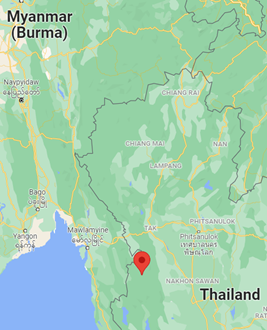
very close to Myanmar.
Tak is famous for its greenery and many local minorities that live across several small villages. The majority of minorities here still have unique traditions and heavily rely on nature and agriculture in every aspect of their lives. Therefore, we do not need to say how much the forest means to them.
Apart from this, Tak is also well known for how hard it is to commute there. You can experience thousands of corners that might even make the most carsick-tolerant person have some ?. Therefore, you normally need to have some time to wander around. Despite the seemingly short distance from Bangkok or Chiang Mai, the road itself is quite dangerous, requiring your ultimate attention in every corner.
Having researched for many weeks, I have noticed that there many amazing places that intrigued my “deep passion” for trekking. I contacted the head of the local community over there who takes care of any tourists who would like to come to the town. Even though there are many local communities there, only a few main communities are responsible for coordinating and dealing with external parties like us because of language barriers. Many local communities speak their language which somehow shares the same origin as Thai but it still significantly differs from one another.
Again, after an overnight bus from Bangkok to Mae Sod Bus Station (a district where the main cross border entry between Thailand and Myanmar is located) and another 5-hour bus in a local bus to the meeting point, finally, we made it without problem, at least nobody threw up. We stopped by each viewpoint and had some breakfast along the way too.
We met with the head of the community and got ourselves ready for a long journey ahead despite all the soreness from transportation. Unfortunately, we needed to take a ride for another hour to the starting point where we would meet our local rangers and porters there.
It rained quite heavily in the morning, making the entire trails muddy, but nobody cared, we came this far not to go back! The view along the trail was different from the first trip above. We say mountains, forests, and farms. We had a lot of fun conversations with our local rangers and porters, and also those passed by as well.
After 3-4 hours, we eventually made it to the first camping site which was located next to one of the cleanest, clearest, and freshest small rivers. We could not wait to jump in and reboot our energy. After relaxing a bit, it was time for us to start cooking dinner from the ingredients we bought from the local communities for every meal for our 3 days 2 nights in the middle of the forest alone.
Waking up very early for the next day, it was the time for us to explore the mountain to the waterfall and the highest peak that was in Thailand territory!
There are many rivers and canals or small ponds along the way. Dehydration was never a problem in this trial! Finally, we made it to where we wanted to witness.
At that time, it was not the most beautiful time to enjoy the waterfall. However, it was so stunning enough that we felt worthwhile in every single second we spent with friends and local people here. Suddenly, it rained and we need to continue walking up to the top! It was not quite a tranquil trek but adventurous and full-of-laugh instead. Nevertheless, we made it to the top at the end with perfect weather..
All of us spent some time enjoying the view and having lunch together with our local ranger that we cooked and carried from our camping site. After a few hours, we decided to head back before it was about to rain again.
On the last day, it was quite depressing for us that we needed to go back to work in a hustle and bustle city again. However, that’s the matter of life for all of us. We had the most amazing time together with our friends and local communities here. The greatest memory shared with everyone – is the only thing we picked up from this forest back with us.
No matter how tired we were, all of us went to work right after we commuted back to Bangkok in the early morning of the following day with a ton of smiles.
Let’s get to know one of many CBT operators in Thailand!
Chong Sa Dao village in Kanchanaburi province
For today, we brought to you an amazing place that is not very far from Bangkok. It is the place where you will understand how amazing the local people are when they collaborate and work together to preserve and sustain their intellectual legacy and publicize it through a form of CBT.
This village is call Ban Chong-Sa-Dao. Ban in Thai means home/house. In this context, it means like a village where you have many households, and all of them are collectively viewed as a house.
Ban Chong-Sa-Dao is a village located in Kanchanaburi, a province where one of the most popular waterfalls in Thailand is located – Erawan Waterfall. This province is not a stranger to Thai people because of its close proximity to Bangkok and greenish scenery.
Ban Chong-Sa-Dao is the CBT village that shows the relationship between local villagers and wild elephants by relying on the little creature – bee!
This village is close to many other attractions (both globally-touristy and local/non-touristy). You may want to go to other places after this, but let me tell you, a night staying with local villagers is worth an experience!
Some activities that you can do with local villagers here are:
- Trekking (daytime) – along the trail, you will see a well-preserved forest with an abundance of trees and small canals. However, the highlight here is that you will be able to many properties that are left by the elephants when they walked around during the nighttime. You are going to experience the forest with a different kind of smell … if you know what we mean.
- Beekeeping – the local villagers love bees as their children because these bees help to keep them safe from wild elephants. In the meantime, the local community can collect the honey from farm bees as another source of income as well. You can be sure that if you support the honey products here in this community, it’s all organic and 100% going to the local community!
- Rafting – You will sit on a long floating board, and the community will gently row the board along with the river and you can jump on and off any anytime into the core river of Kanchanaburi which is Kwae River. You will enjoy a refreshing river and amazingly beautiful views on both sides along the river.
Actually, there are many more activities that you can do with the community, but the above are the most common ones. In case you are interested to see how informative and collaborative the village is, here are some details you may want to know.
Facebook: https://www.facebook.com/CBTBanChongSadao/
Village leader: Aoi +66 85 291 0993
Ban Ja Bo
Ban Ja Bo | บ้านจ่าโบ – the hidden community that you will fall in love with everything
Ban Ja Bo village is located in Mae Hong Son (แม่ฮ่องสอน) province. Given that this community is located right in the middle between two globally-recognized cities – Pai (ปาย) and Mae Hong Son main district, many people including Thai often just make a temporary stop. However, I am writing this article to make you note down this village in your bucket list, mainly because the locals will make it worth your visit!
Ban Ja Bo is home of La Hu (ลาหู่) people (or some also call them Mu Ser (มูเซอ)) – one of many minorities in Thailand; especially, in the Northern part of Thailand. In the past, this tribe lived in the southern part of China, but after being invaded by other tribes in China, they emigrated to neighboring countries including Myanmar and Thailand. Now, in the northern part of Thailand, La Hu people live across many communities taking care of the forest and earning income through agriculture.
However, over a decade, community-based tourism became a larger and larger part of the community’s backbone, provided that their cultural heritage and surrounding natural gems are too attractive not to visit.
For today, let me guide you through some views and activities that you can enjoy together with local people when you visit this village.
The very first thing is how friendly and hospitable the local people are. Whatever you would like to do, they can connect you with the local operators or even just walk around with them! Many local villagers run naturally-sustainable accommodation, which is cozy enough to feel warmth in the air – but please do not expect a lot of comfort and convenience as available hotels.
Among many activities you can do, here are my top 3
Phu Pa Mhok | ภูผาหมอก
Here is a short-but-steep hike that is worth your sweat for a fantastic sea of fog in the morning. Along the trail, you will be amazed at how this small village embraces such a picturesque viewpoint and rich culture. You can just go there by yourself, but if you would like to support locals, they also offer a guiding service at cheap costs.
Kuay Toew Hoi Ka (Noodle restaurant – sitting leg hanging) | ก๋วยเตี๋ยวห้อยขา
Imagine having a hot noodle for only 1-2 US dollars but the thing that you see in the front is a sea of fog. On lucky days, you will be welcomed by gorgeous sunrise where you can see thousand of sun rays shining across many valleys and mountains.
Walking around the community
Immerse yourself in the village to learn all the cultural heritages many locals are ready to demonstrate throughout the village. The activities could include cooking local cuisines, making a local music instrument, farming and vegetable picking, traditional dancing (only in special events), visiting caves, traditional clothes making, and listening to the history of the village.
There are many more activities that you can do with the community, go check them out here: https://www.facebook.com/cbtbaanjabo or you may contact the village leader/coordinator Khun Na Go (ป้านะกอ) +66 998946654, Khun Ta Nhom (พี่ถนอม) +66 885912100, and Jaa Chon (จ่าชน) +66 979488346
The photos in this article are derived from the Facebook fan pages of (i) Ban Ja Bo village and (ii) Kuay Toew Hoi Ka (noodle restaurant in Ban Ja Bo village – https://www.facebook.com/Nikonbb88/) themselves.
—
Atip
COVID19 is also impacting Thailand. Read more about COVID-19’s impact on community-based tourism projects in Northern Thailand here. You can read about it in chapter six on the Kayan page.





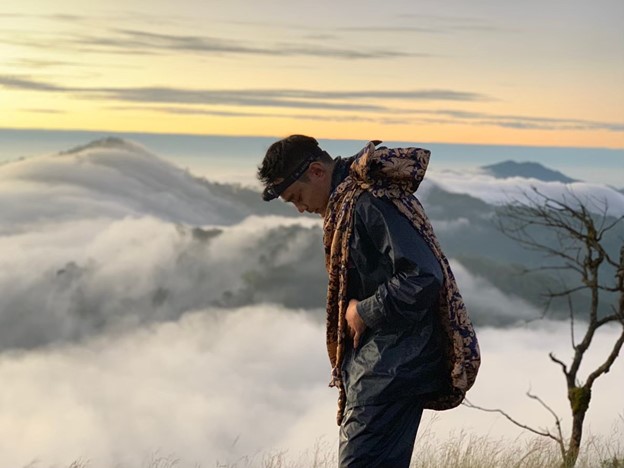


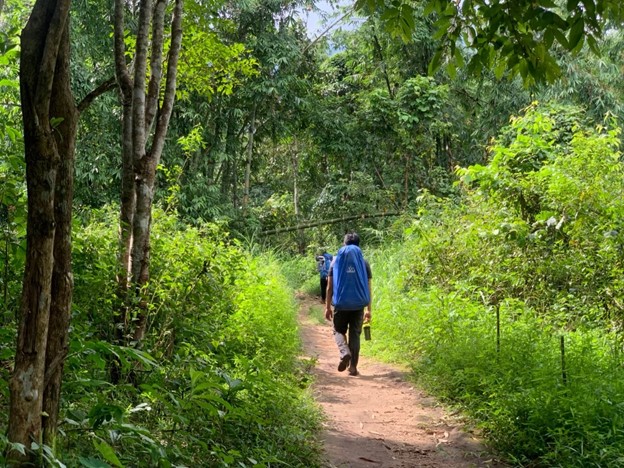

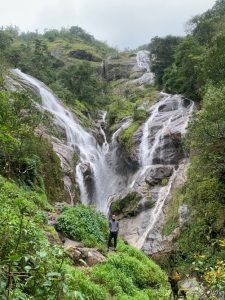
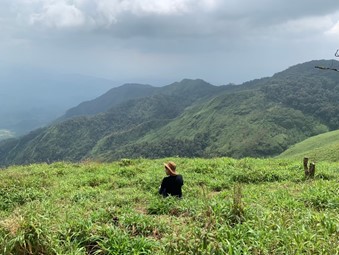



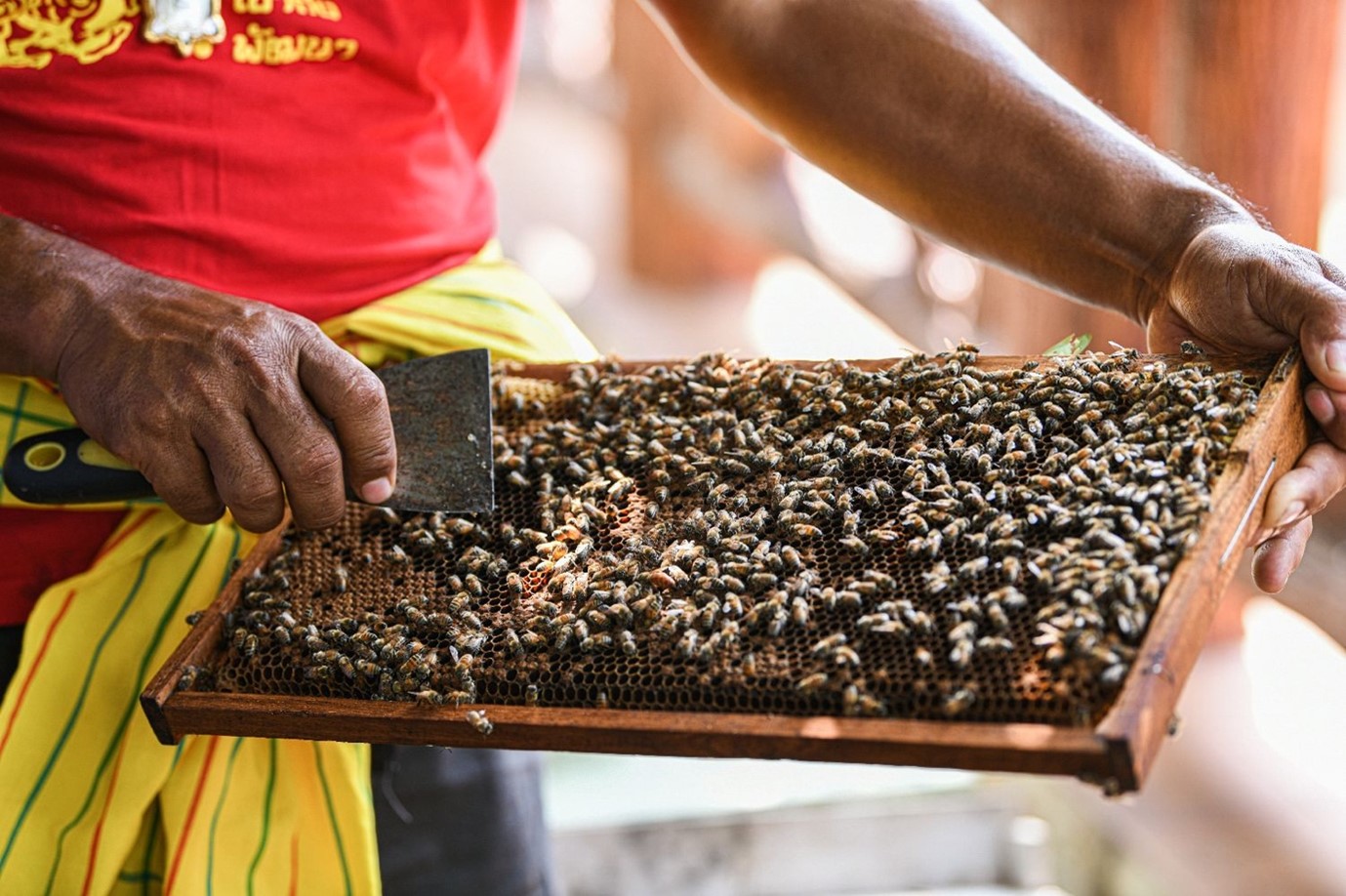








This Post Has 0 Comments